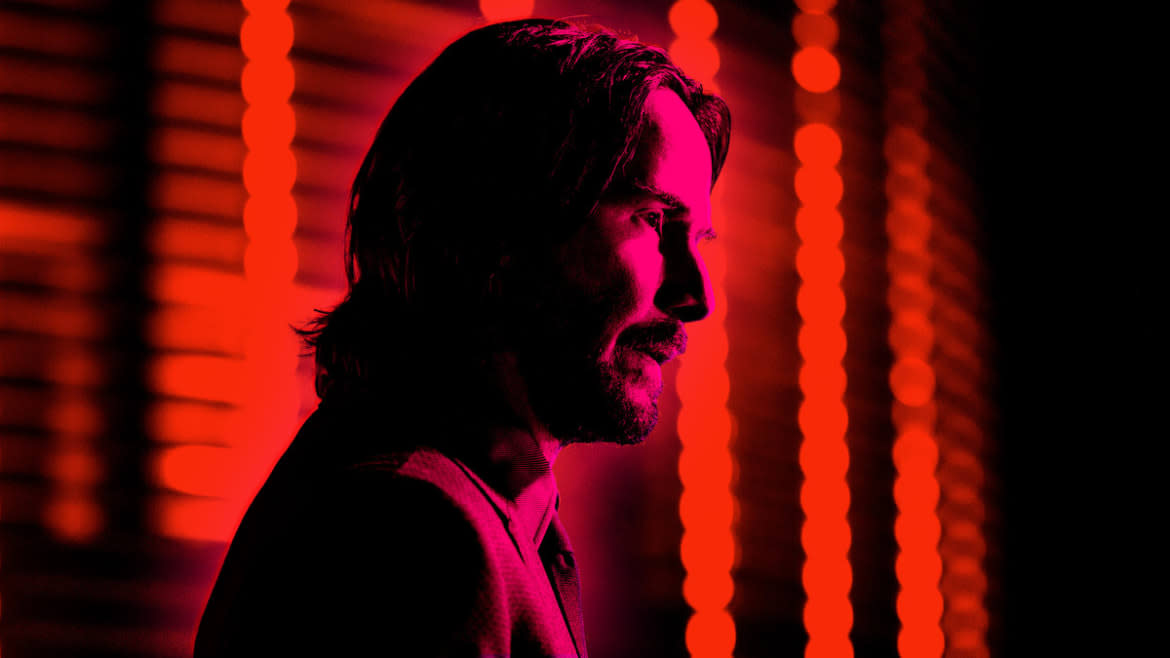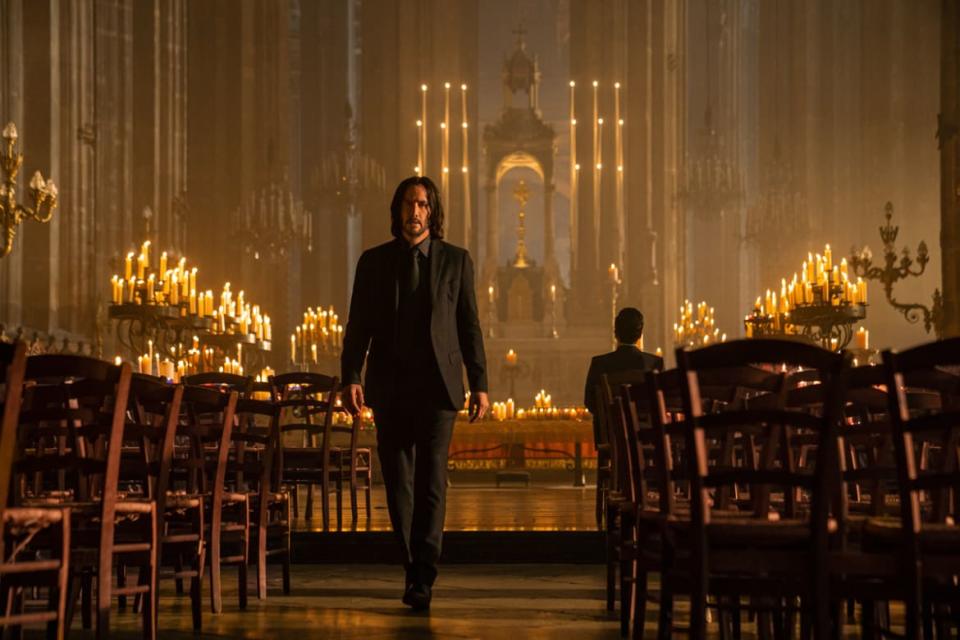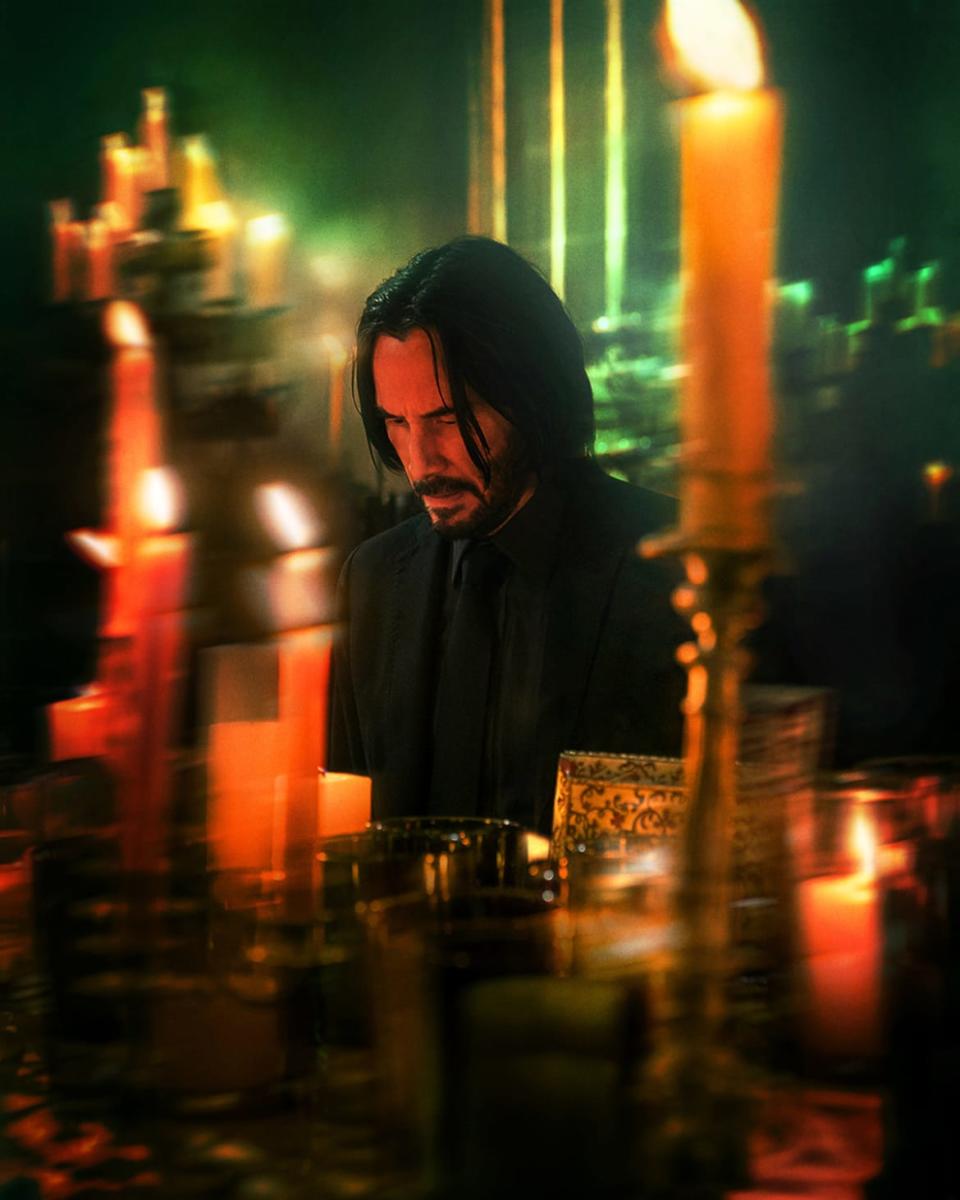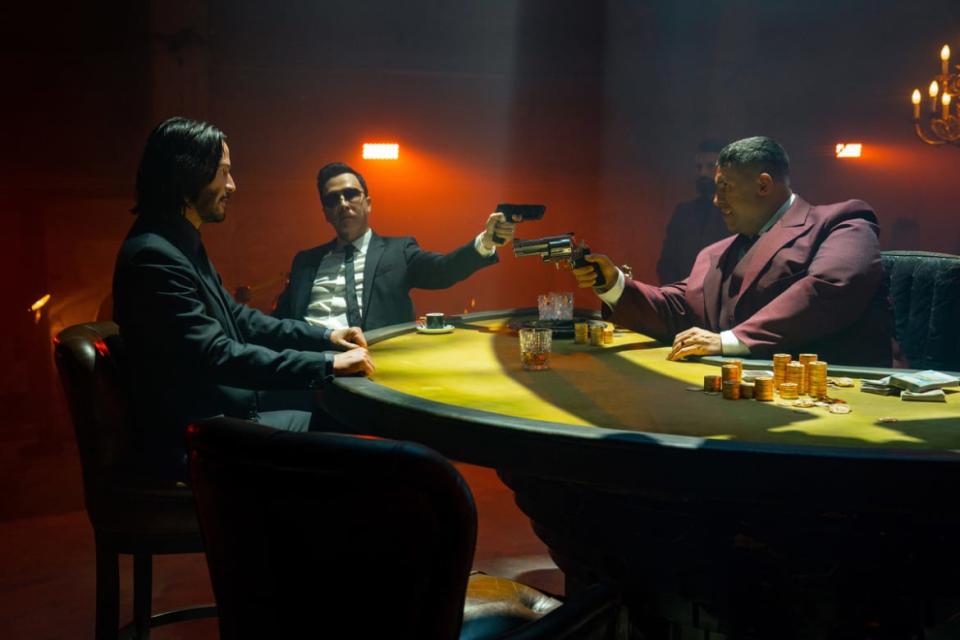‘John Wick: Chapter 4’ Is Nearly Three Hours of Bonkers Keanu Reeves Perfection

- Oops!Something went wrong.Please try again later.
John Wick: Chapter 4 borders on being too much of a good thing—both in the sense that it’s the fourth installment of a series that could have easily ended after its first, and with regards to its gargantuan 169-minute runtime. Fortunately, more turns out to be just about right in this case, with the film offering up such an onslaught of brutal, breakneck action that it’s easy to forgive its less compelling narrative excesses. Designed as a culmination as much as a continuation, it may not be consistent enough to rank as the franchise’s finest, but when it gets going, it cooks with gas.
[Spoilers invariably follow]
Whereas John Wick: Chapter 3 – Parabellum opened with a breathless bang from which it never fully recovered, director Chad Stahelski’s latest (which premiered Monday at SXSW and is in theaters March 24) takes its time kicking into explosive gear. Thought to be dead thanks to Continental manager Winston (Ian McShane) shooting him off the patio of a NYC skyscraper, Wick (Keanu Reeves) is introduced hiding out with the Bowery King (Laurence Fishburne), who’s nursed him back to health so that he might make a grand return.
That he does, in the desert on horseback, shooting down three riders before confronting the newest Elder (George Georgiou), a mysterious figure who stands above the High Table that governs the world’s assassin clans. When the Elder refuses to forgive Wick his trespasses—namely, his John Wick: Chapter 2 murder of High Table bigwig Santino (Riccardo Scamarcio)—Wick unceremoniously takes his life.

This execution causes considerable trouble for Winston, who’s visited by the Marquis de Gramont (Bill Skarsgård), a dapper High Table member who—as punishment for Winston failing to kill Wick—takes a figurative pound of flesh from the manager before excommunicating him and detonating the Continental. This turns Winston back into a Wick ally, and it’s followed by Gramont hiring blind professional killer Caine (Donnie Yen) to kill Reeves’ famed assassin.
Caine has no interest in this gig (in part because he’s old friends with Wick), but in order to protect his innocent violinist daughter from Gramont, he accepts the assignment. Almost immediately, he’s found his target in Osaka, where Wick has taken refuge with another long-standing pal, Shimazu (Hiroyuki Sanada), who risks life and limb—despite his daughter Akira’s (Rina Sawayama) protestations—to help fend off an invading High Table battalion.
The New ‘Dungeons & Dragons’ Movie Actually Rules
Wick’s pitstop in Japan is followed by trips to other global locales, including Germany and Paris, where he’s destined to face off against Gramont at Sacré-Coeur—merely the final church that he visits along his blood-soaked journey. Initially determined to slay the entire High Table, Wick instead takes Winston’s advice and opts for another route to freedom: challenging Gramont to an old-school High Table-sanctioned duel, which requires that Wick first get back in the good graces of his Ruska Roma family.
This deus ex machina is a bit absurd, if in keeping with the saga’s obsession with portentous rituals, rigid moral codes, gilded markers and crests, and other assorted world-building details, all of which have become so prevalent that they flirt with the ludicrous. Still, they add an extra layer of over-the-top severity and enormity to a venture predicated on insane immoderation.
Wick’s skirmishes in John Wick: Chapter 4 are progressively more elaborate and awe-inspiring, beginning with a nunchucks-enhanced throwdown against adversaries sporting various forms of armor (including designer suits) and peaking with a monumentally lengthy gauntlet from the circular roadway around the Arc de Triomphe to the steps leading up to Sacré-Coeur.

These and other sequences go on so long, and are filled with so much blistering hand-to-hand, blade-to-blade, and firearm and vehicular combat that the blitzkrieg of ferocious movement and mangled bodies becomes hypnotic. Contributing to that dazed-and-confused atmosphere is the film’s sterling set design, with Wick and his foes battling in color-coded environments (a neon light-drenched space decorated with Japanese artwork on glass panels; a posh, rhythmic rave marked by artificial waterfalls) that render the mayhem in quasi-abstract terms.
Stahelski and cinematographer Dan Laustsen put a premium on glossy surfaces, silhouetted figures and glistening panoramas of international hotpots—an approach that’s in tune with the series’ comingling of beautiful style and vicious carnage, and is highlighted by a prolonged video game-ish aerial-view showstopper. Shay Hatten and Michael Finch’s script isn’t nearly as sharp, yet it provides enough context to keep Wick moving from one perilous encounter to another, as well as shrewdly reduces the protagonist to a ronin-by-way-of-gunslinger of few words.
Letting his stares and homicidal skills do the talking for him, Reeves exudes typically fearsome gravity, purpose and weariness. Though he can more than hold his own, he’s greatly assisted in this sequel by Hong Kong legend Yen, who—doing his best Zatoichi routine—proves an enlivening addition, whether cracking jokes, fuming solemnly, or demonstrating his own amazing capacity for lethality, during which he resembles a cross between a poised samurai and a drunken master.

While Skarsgård’s Gramont is an arrogant upper-cruster who likes to hold court in the Louvre and the Paris Opera House, he’s more of a functional than unique villain, and Shamier Anderson’s Mr. Nobody, an enigmatic tracker with a dog that likes to attack opponents’ crotches, feels like a bland rehash of Halle Berry’s Sofia. John Wick: Chapter 4 is less about novelty than immensity, and there are times when it suffers for that minor sin; as Wick performs headshot after headshot, the film can become a tad routine. Stahelski, however, ups the ante—in terms of scale and stakes—to delirious effect, such that somber conversations about what Wick might do should he liberate himself from the High Table, what kind of man he is, and the epitaph he wants for his tombstone come to resonate as more than mere filler.
The body count is astronomical in John Wick: Chapter 4, yet Stahelski still prioritizes his personality-rich cast, including Scott Adkins (under mounds of latex) as a heavyset German Table titan who invites Wick, Caine and Nobody to play a deadly game, and Clancy Brown as the Harbinger, a High Table muckety-muck who’s asked to arrange and oversee Gramont and Wick’s climactic showdown (partially in Latin!). By film’s conclusion, Wick may not view himself as a killer at heart, but his fourth adventure—like those that preceded it—thrillingly and savagely slays its modern action competition.
Sign up for our See Skip newsletter here to find out which new shows and movies are worth watching, and which aren’t.
Get the Daily Beast's biggest scoops and scandals delivered right to your inbox. Sign up now.
Stay informed and gain unlimited access to the Daily Beast's unmatched reporting. Subscribe now.

